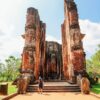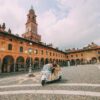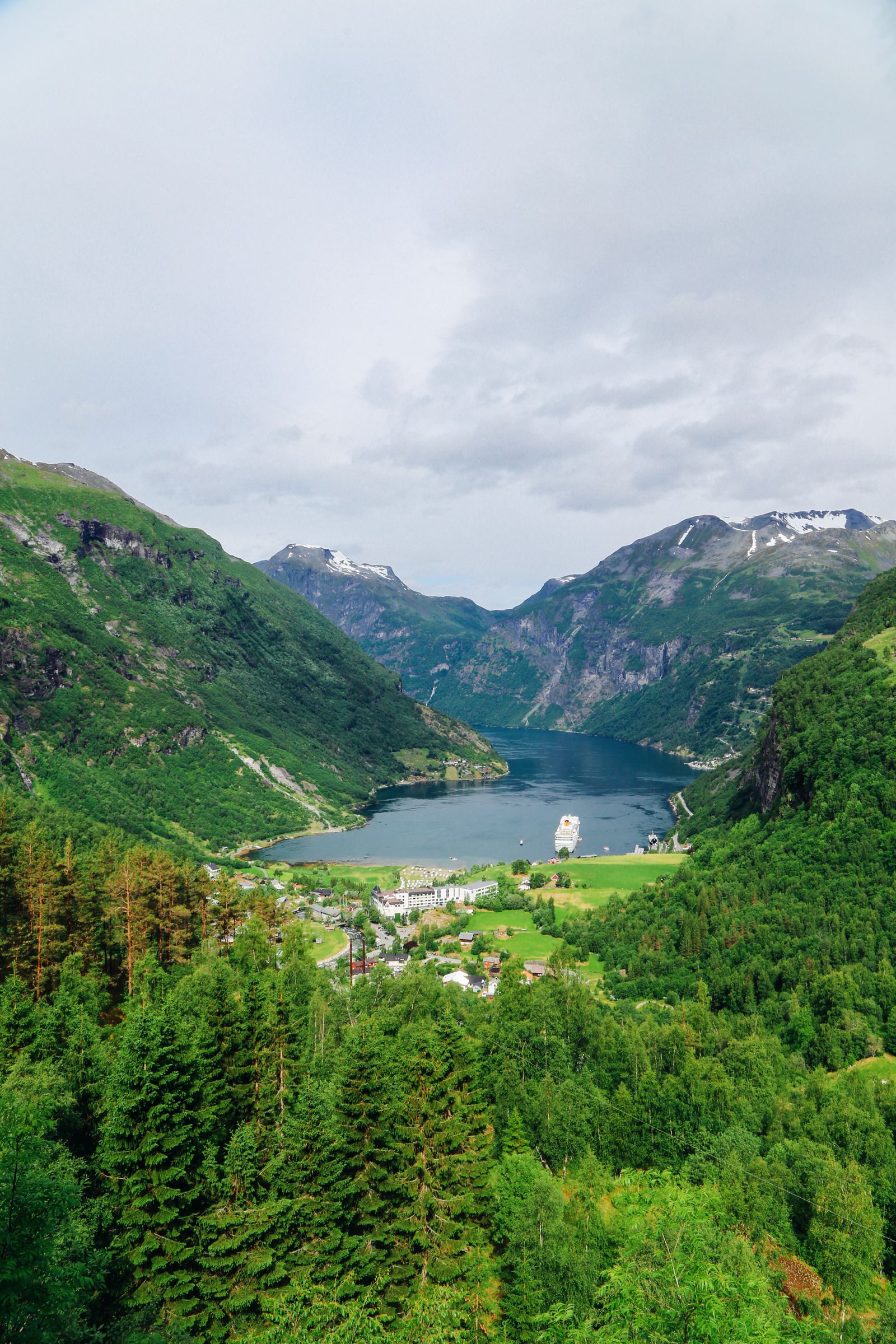Panuati is one of Nepal’s oldest towns and one of its most important historically too – largely due to the fact that it’s pretty much been left the way the founders built the town.
It’s not too far from Kathmandu either (it’s actually a commuter town for some people) so it makes for the perfect place to visit when you’re in Kathmandu.
Thankfully, this also meant not having to get up too early before leaving to go explore Panauti.


By the time we arrived, the sun was well and truly out and the locals were busy going about their daily business.
We had a guide with us that day (not our guide Suman who we’d had the entire week – he’d left once we got back to Kathmandu on a holiday with his family to Pokhara) who took us around the town but for the most part, we were pretty much just left to explore it at our own leisure.



We wandered past traditional buildings, standing side by side with more moderns ones…





…and even found (random – I know but it was such a funny/bizarre sight to see) a chicken which had ducklings!
I think what happens here is the eggs are gathered from ducks (ducks are fussier about their eggs than chickens and will refuse to hatch them if they think they’ve been tempered with – chickens on the other hands will try to hatch a white cup or a plastic bottle if it even remotely looks like an egg when they’re broody). The chicken then goes on to hatch the duck eggs and takes care of the ducklings till they’re old enough – not quite sure how the ducklings then learn how to swim though…
Anyway, once I was able to tear myself away from simultaneously laughing and staring at the chicken ducklings, we carried on exploring the down, before following one of the folks in our group through a hallway that led to a school.


The school kids here were so unbelievably excitable the minute they spotted us! There were huge chants for us to take their photos, followed by excited laughing and shrieking once they saw photos of themselves. I almost felt guilty about disrupting the school day until I noticed the teachers were matching the kids’ excitement and eagerly showing us around the school and pretty much giving us a proper tour of the school.



This school was pretty much cuteness overload – just look at that little kid with his school folder!
The older kids posed up a storm every time they saw the camera with the younger kids moving much faster than my camera shutter could even fathom a click.


Eventually, we had to say farewell to the kids, thoroughly invigorated by their energy and carried on in search of the temple complex in the town.


The temple complex in the town is one of the most important sights worth seeing and so if you find that you’re visiting with very little time to spare – head here first!






All around the town, you’ll find old historic houses, some of which were damaged by the earthquake, but have since been left in a state of disrepair due to lack of funds. If ever you wanted to donate money to a charitable cause, donating to help Nepal build itself is something I would strongly urge you to consider.


Most people who live in these places can’t afford to rebuild their homes themselves – especially not with these older heritage home. Some of the people (especially in less popular, less touristy areas) have resorted to living in corrugated iron shacks while saving to hopefully complete their homes. Whatever you can donate towards any cause in Nepal to help people would absolutely go a very long way!
You can find out more about donating to Nepal on the official UNESCO website here.







For lunch, our guide had arranged for each of us to be paired up with families from the area, who organized homestay (very much like the ones we did in Tansen where you get to stay with a local family).
We met our hosts, were welcomed with a bindi and flowers, before heading down the street to her home.
At our host’s home, the entire family, across several generations lived here but they all had different rooms spanning different floors of the building with everyone saying hello as we went past and the matriarchs eventually joining us in the kitchen while we had lunch.




There was some strong competition but lunch here was the absolute best meal I’d had in Nepal – hands down! I have no clue how she did it or what her secret ingredient was but it was so good! I just remember constantly saying to lunch how delicious every single thing way – even the stuff I’d usually avoid or be a bit ambivalent about back at home (like spinach).
Lunch was also one of those events where your plate just keeps getting filled right back up the minute you eat it. By the end, you almost have to beg to stop getting fed – at which point you’re given even more to eat! Suffice to say, you never leave a Nepali home hungry after lunch. 🙂
Speaking of which, after lunch, we headed upstairs to check out the view over Panuati as well as their rooftop garden (they had everything from tomatoes and cabbages right through to guavas up here – it was pretty impressive actually).


We also got to check out some of the rooms potential guests can and would stay in if they were doing the homestay with our hosts (after having done it in Tansen, I was eager to see what it was like – also eager to share it with you if I’m being honest, so you get a broader sense of what Homestays are like here).
A homestay is something I’d definitely recommend when you’re here, even if you’re more into luxurious hotel suites. It’s just such a fantastic way to get to know the people properly and to really get an insight into life in Nepal – something you’d never get from your fancy hotel room so even if it’s just for one night – it’s definitely worth staying in a homestay!
We bade our host farewell and headed back to the village square to meet with the rest of our group before finally saying a full farewell to the historic town of Panauti!


Next stop – one of Nepal’s most amazing cities (also a UNESCO World Heritage site) – Bhaktapur!
More on that in the next post.
Check Out The Very Best Of Great Britain!



































































